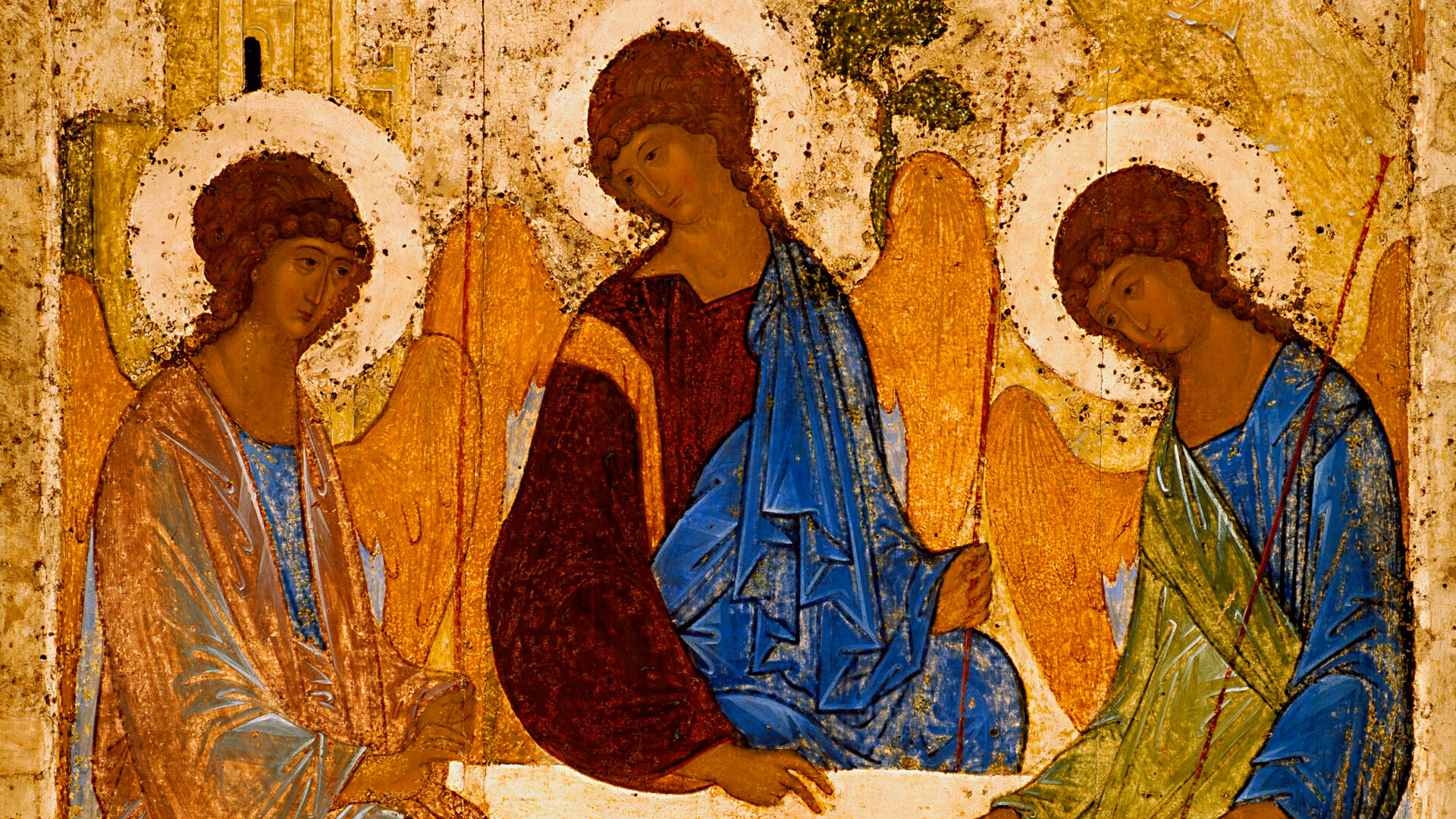
All icons are intended to provide a visual interpretation of difficult philosophical concepts. Orthodox icons are particularly famous for this, but, even among them, ‘The Trinity’ by Andrei Rublev is in a league of its own and a truly unique phenomenon.
The icon painter, who was a monk, not only succeeded in conveying one of Christianity’s most important and difficult-to-grasp doctrines about the Divine Trinity, but he also did so at the highest artistic level. Theologians believe that the icon encapsulates Christian ideas about God and love.
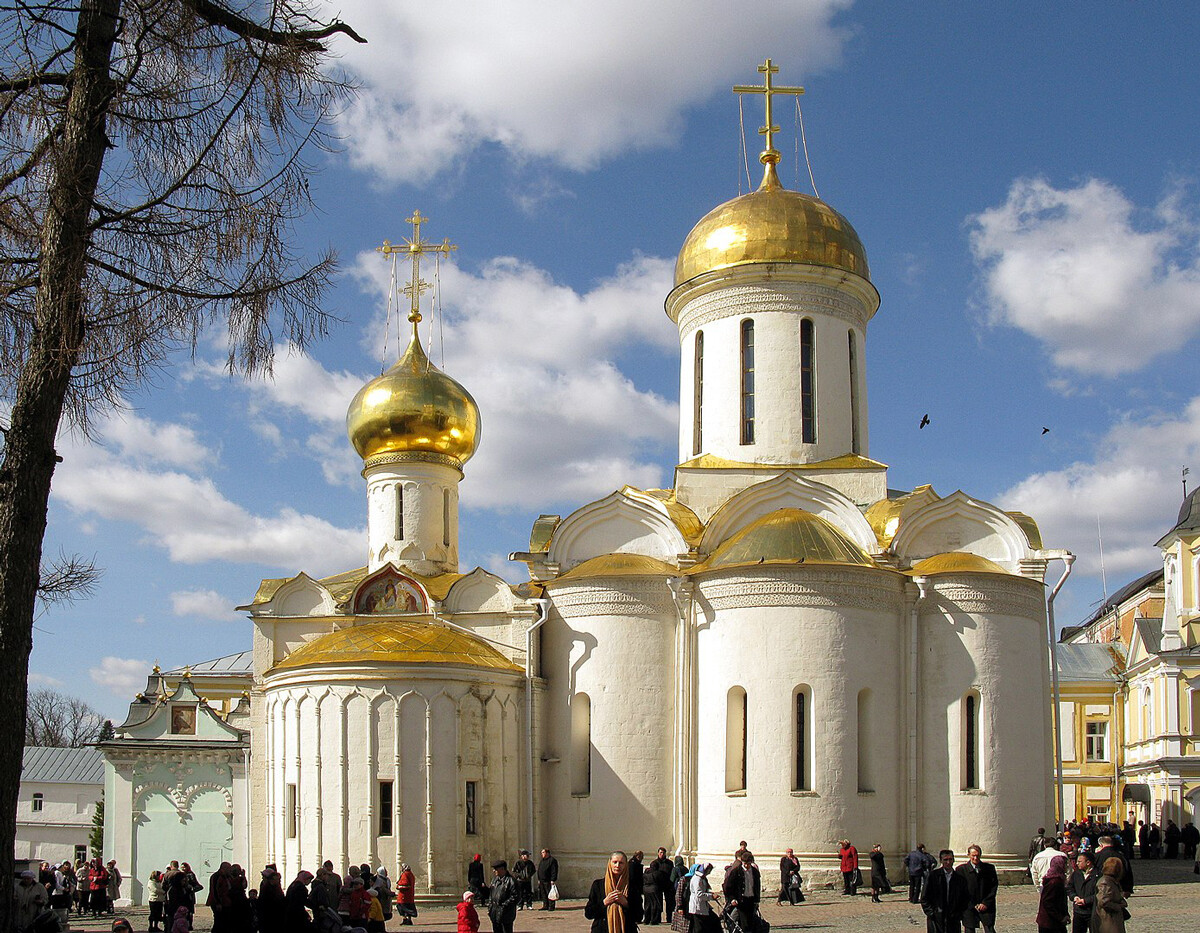
The icon’s history is inextricably linked with the Trinity Lavra of Saint Sergius. One of the most important Orthodox monasteries, it was founded by Sergius of Radonezh. ‘The Trinity’ is believed to have been painted in the first half of the 15th century (between 1422 and 1427, according to experts at the State Tretyakov Gallery). Nikon, a disciple of Sergius of Radonezh and the second abbot of the monastery, is said to have asked Andrei Rublev to paint an image of the Holy Trinity “in praise of his father, Sergius” for the monastery’s newly-built Trinity Cathedral. It is believed that Rublev’s artel (team of craftsmen) also frescoed the entire Trinity Cathedral.
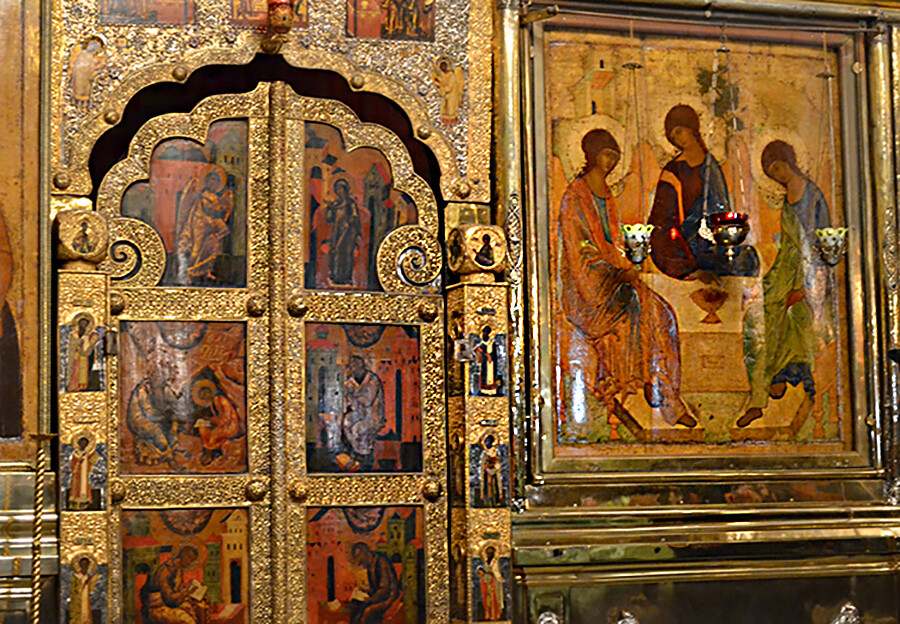
Nowadays the Trinity Cathedral has a copy of the icon
Irina Dmitrieva (CC BY-SA 4.0)The icon, measuring 141.5 x 114 cm, is painted in egg tempera on wooden board. It became one of the monastery’s most venerated sacred objects (besides the relics of Sergius of Radonezh) and was displayed on the Trinity Cathedral’s iconostasis, to the right of the Royal Doors leading to the altar.
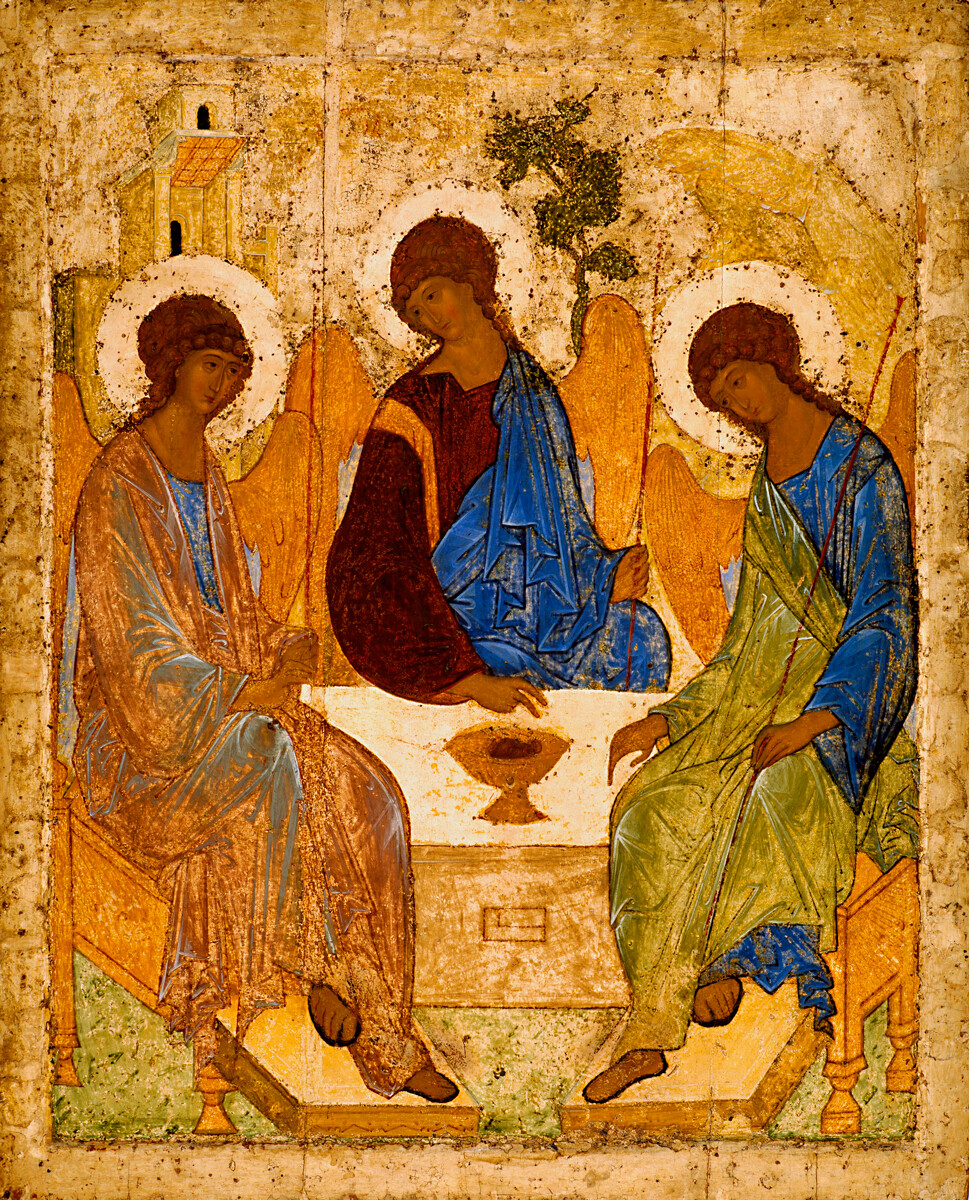
Andrei Rublev. The Trinity
Tretyakov Gallery“Taking the well-known biblical story ‘The Hospitality of Abraham’ (when the Lord appeared to Abraham as three travelers [Genesis, Chapter 18]) as a starting point, Saint Andrei stripped it of secondary detail and turned it into a symbolic representation of the mystery of the Holy Trinity - God being one, but in three persons: the Father, the Son and the Holy Spirit,” explains Orthodox priest Antony Borisov.
The composition of the icon is based on three angels and a table. On the table, there is a cup containing the head of a calf. The cup is the center of the icon and the figures are depicted in a circular arrangement around it (and even the heads of the angels are inclined so that the composition creates a circle). The cup as a symbol of the Eucharist, the holy sacrament of communion, alludes to the New Testament and Christ himself. Two of the angels bless the cup - that is, the sacrifice of Christ.
Art historians and theologians still can’t agree on which of the angels symbolizes whom. One of the leading theories is that God the Father is on the left and God the Son in the center (this interpretation is supported by well-known experts on iconography and many prominent religious figures, among others). According to another theory, God the Father is in the center, thus emphasizing the centrality of his figure in the doctrine of the Trinity.
The Trinity doctrine about the three hypostases of the one God, his triunity, is one of the most important in Christianity. But, the difficulty of depicting God lies in the fact that God is incomprehensible and that “no-one has ever seen God”, as the Gospels say. In Christian iconography, there had been attempts to show God the Father as a venerable old man, God the Son as Jesus and the Holy Spirit in the form of a dove, but this visual treatment contradicted a true understanding of the Trinity doctrine and was felt to be problematic (to a large extent because God the Father was unimaginable and could not be depicted).
There are very few surviving examples of such attempts to depict the New Testament Trinity: God the Father, the young Jesus (Emmanuel) on God the Father’s knees and the Holy Spirit symbolized by a dove (a symbolic dove can be found on many icons and church frescoes).
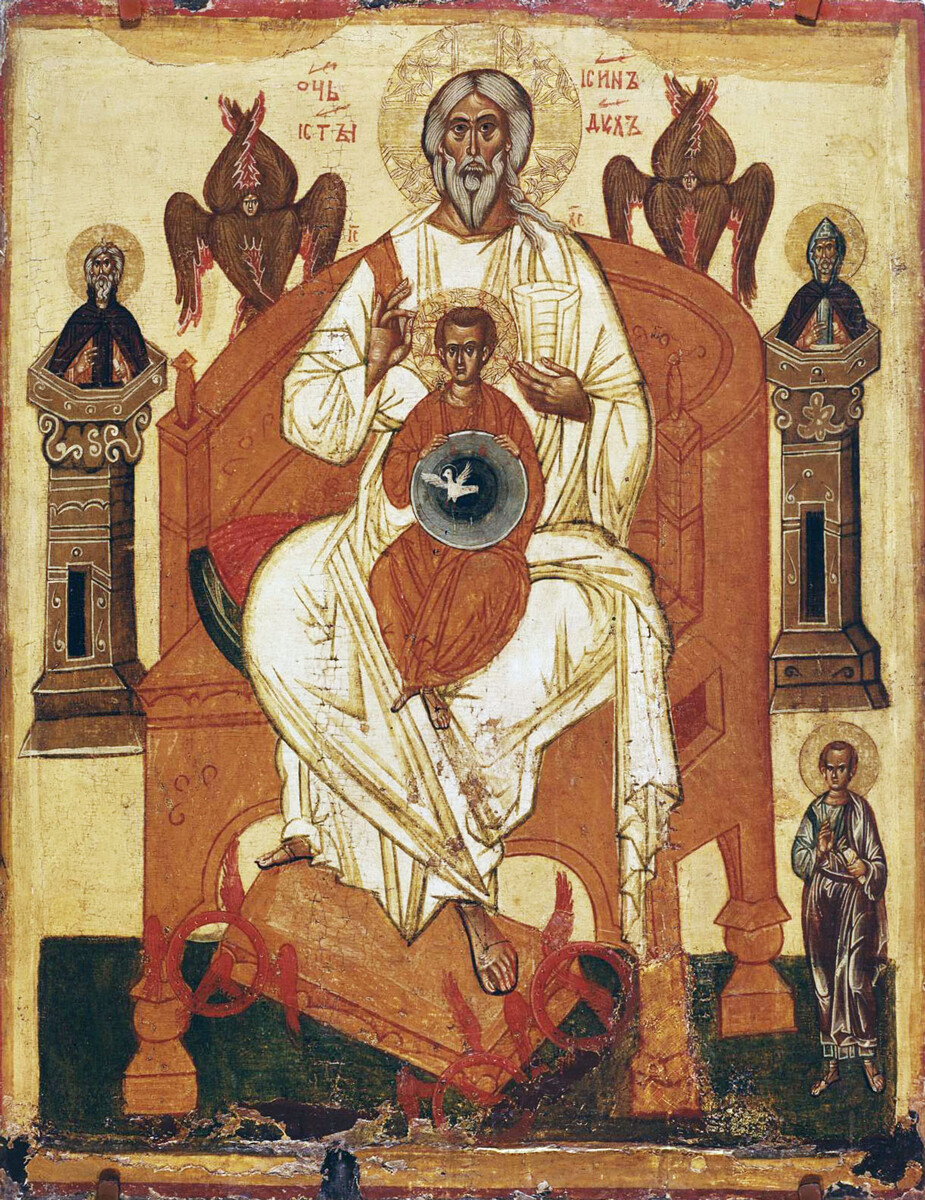
A rare type of New Testament Trinity. Veliky Novgorod, 15th century. Unknown icon painter
Public domainAndrei Rublev was the first icon painter to understand and depict the divine triunity in a different way. His visual treatment of the Trinity was a true stroke of genius and helped this difficult-to-comprehend doctrine to be properly understood. Thenceforth, Russian Orthodox iconography began to use Rublev as a benchmark for depicting the Holy Trinity. Church councils also prescribed adherence to this convention.
It is considered that the emergence of this icon only became possible in the 15th century when in the spiritual circles of Russian Christianity and monasticism the need arose for contemplating God and entering into direct communion with him.
In addition, the image of the Trinity holds a particular sacred meaning for Russian Orthodoxy and represents a kind of symbol of the existence of a united Russia. Rublev’s Trinity coincided in time with the beginning of the unification of Russian lands and resistance to the Tatar-Mongols. “The icon of the Holy Trinity was not just a theological manifesto, but also a manifestation of church pedagogy. It was no coincidence that great Russian saint, the Venerable Sergius of Radonezh, summoned the proud princes to this image (albeit still a pre-Rublev version), appealing to them for unity and peace - ‘so that consideration of the Holy Trinity might conquer the fear created by the hated divisions of this world’,” Antony Borisov says.
In the late 16th century, the icon was encased inside a ponderous gold frame for “safekeeping”, from underneath which only the faces of the three angels were visible (it was also a mark of great veneration, as many wealthy individuals contributed the gold for it, including tsars Ivan the Terrible and Boris Godunov).
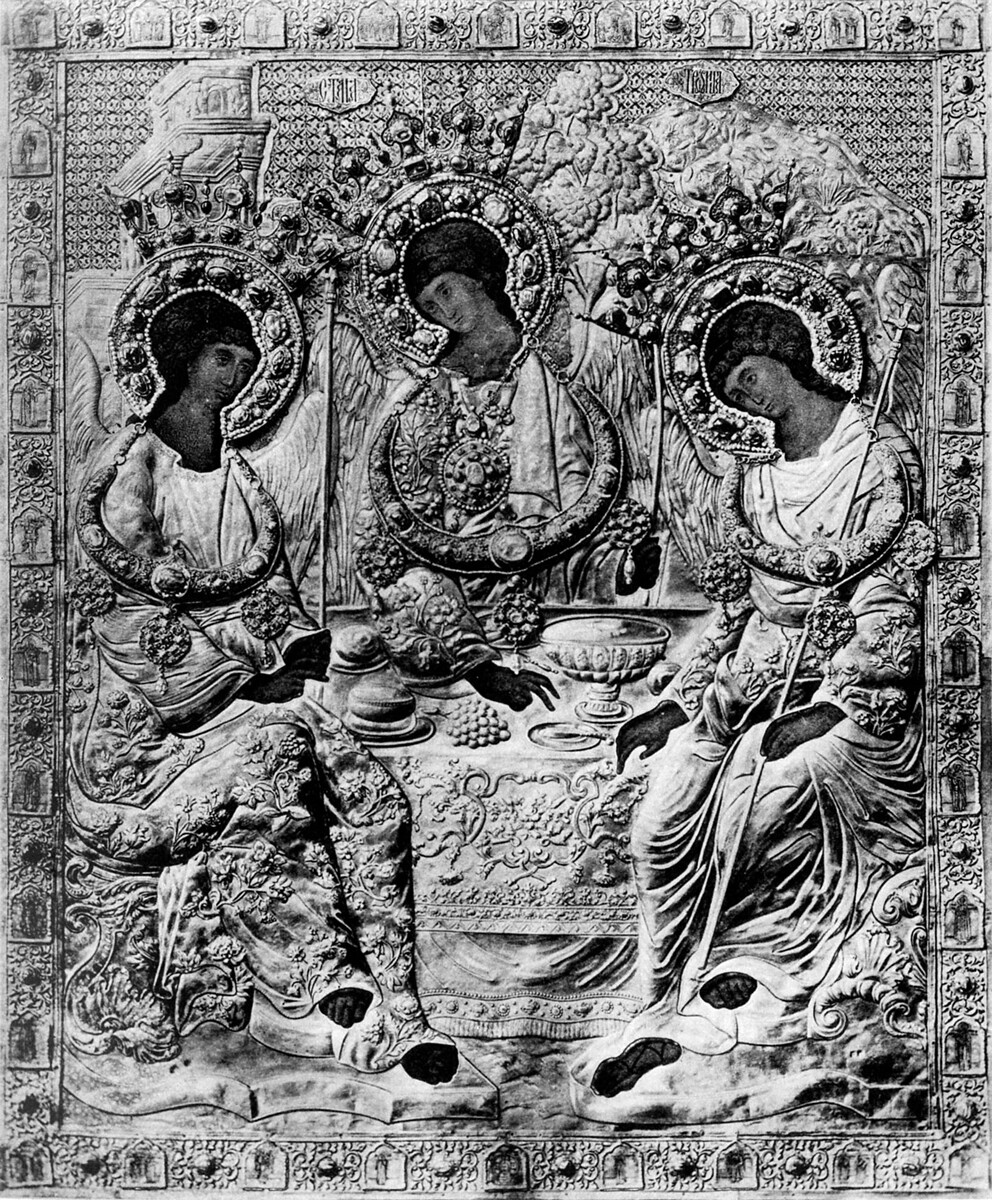
‘The Trinity’ in its gold oklad (metal cover), 1904
Guriano/Public domainThe icon hung in this “body armor” until 1904, when the father superior of the monastery invited restorers to remove the frame and renew the upper layer of drying oil, a special oily compound used to coat wooden icons for conservation purposes.
In the course of several centuries, the icon was restored several times and it turned out that it had been completely “painted over”. On top were several layers of paint crudely masking the original. The garments of the saints, as well as the background, had been repainted. The faces appeared to have been treated more circumspectly and it was these areas that alerted the restorers to the fact that the icon had undergone alterations.
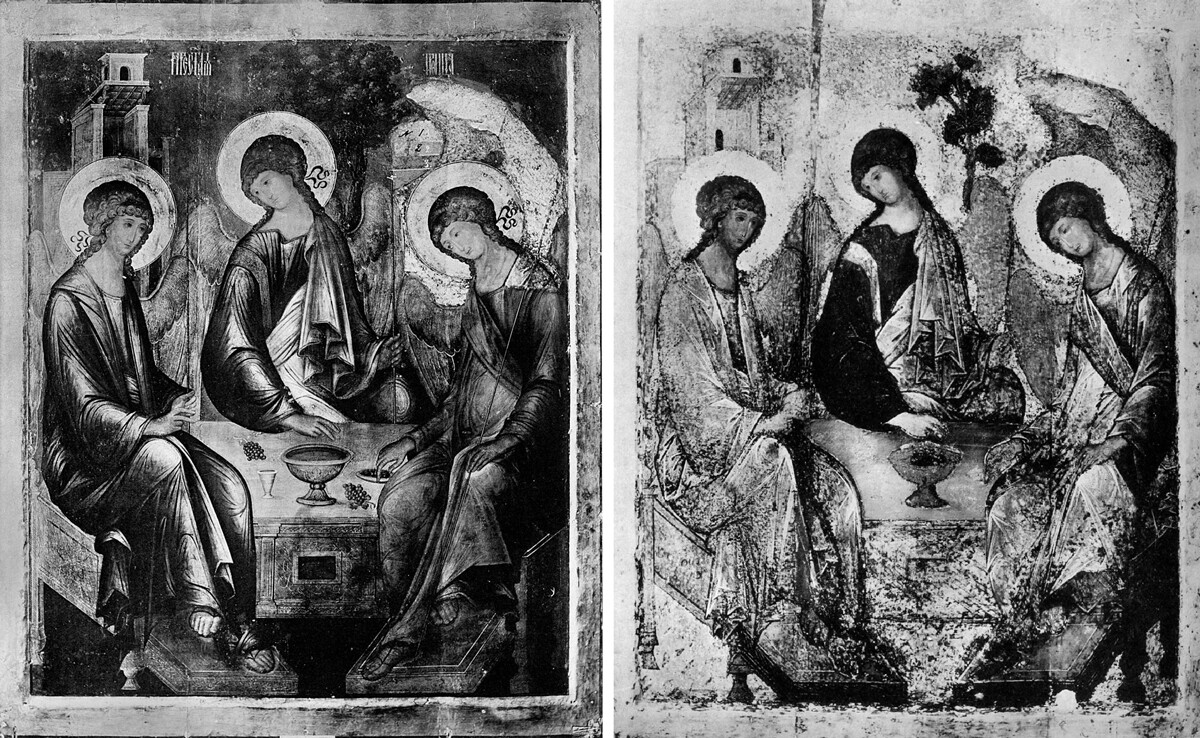
‘The Trinity’ before and after the “cleanup”
Guriano / Public DomainThe restorers carried out a “cleanup” of the icon, removing several later layers and revealing Rublev’s bright colors.
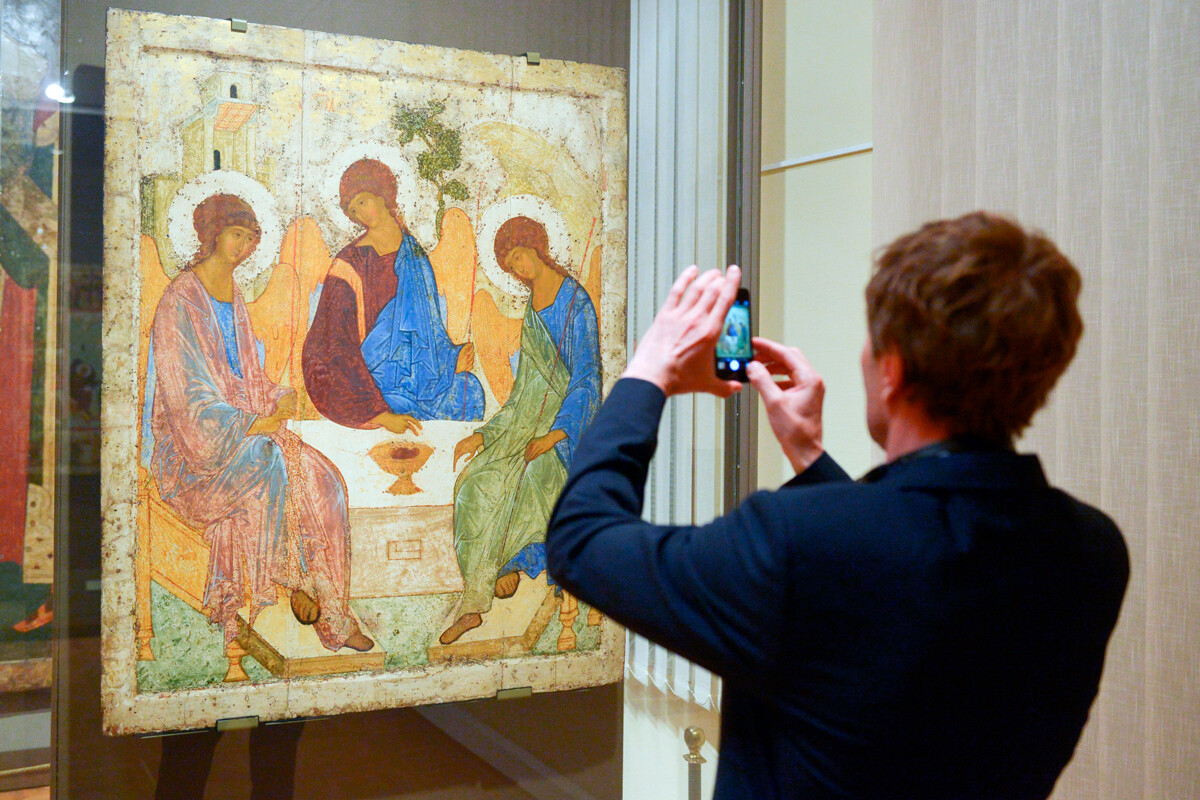
‘The Trinity’ in the Tretyakov Gallery
Vladimir Trefilov/SputnikAs part of the anti-religious campaign following the 1917 Revolution, the Bolsheviks confiscated church treasures for the needs of the state. The Bolsheviks nevertheless recognized the value of individual objects of “art and antiquity”. The Trinity Lavra of St. Sergius was closed down, but a special commission identified items of special artistic and historical value and placed them in a museum set up next to the monastery. In 1929, however, it was converted into what was literally called the ‘Anti-Religious Museum’ and the icon was transferred to the Tretyakov Gallery.
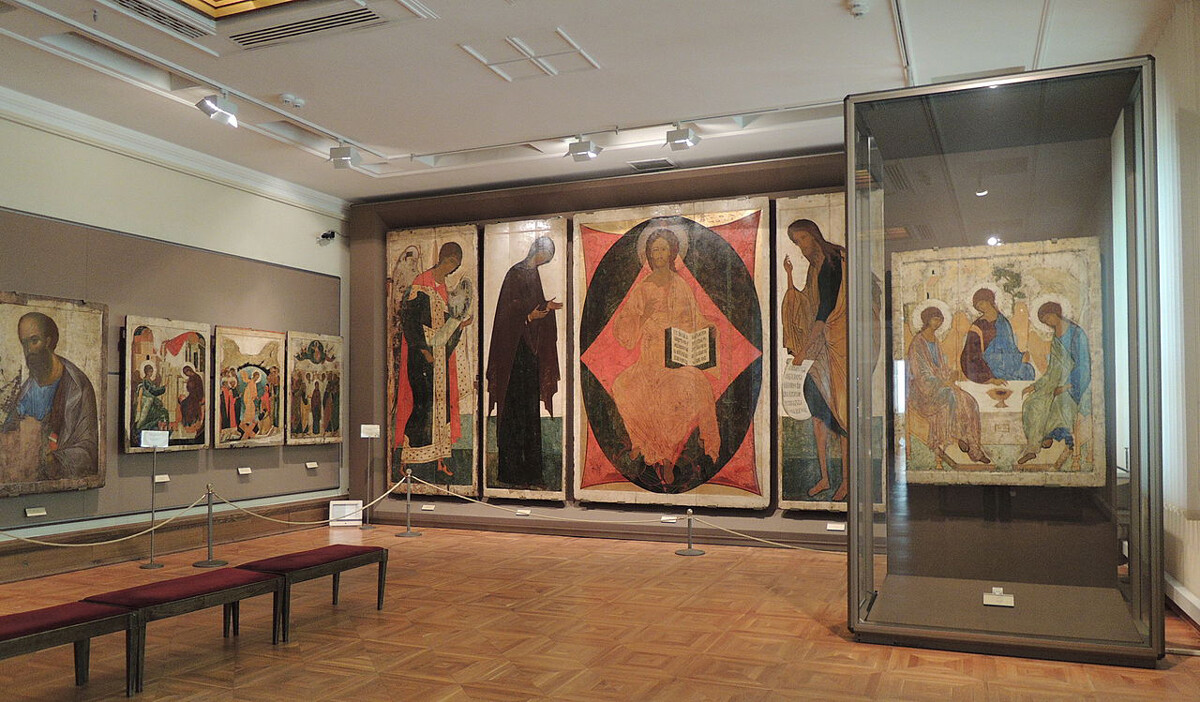
The Andrei Rublev Hall in the Tretyakov Gallery (‘The Trinity’ is on the right)
Wikipedia / ShakkoThe icon has been kept there ever since and has only left the gallery on a handful of occasions. In 1941, it was evacuated to Novosibirsk. Since 1997, the icon has been transferred to the Church of St. Nicholas in Tolmachi - a church/museum attached to the Tretyakov Gallery - for the Feast of the Holy Trinity.
In 2022, for the first time in almost 100 years, the icon traveled back to the Trinity Lavra of St. Sergius for celebrations to mark the 600th anniversary of the finding of the relics of Sergius of Radonezh. It spent several days within the walls of the Trinity Cathedral in a special protective casing to maintain the required temperature and moisture levels.
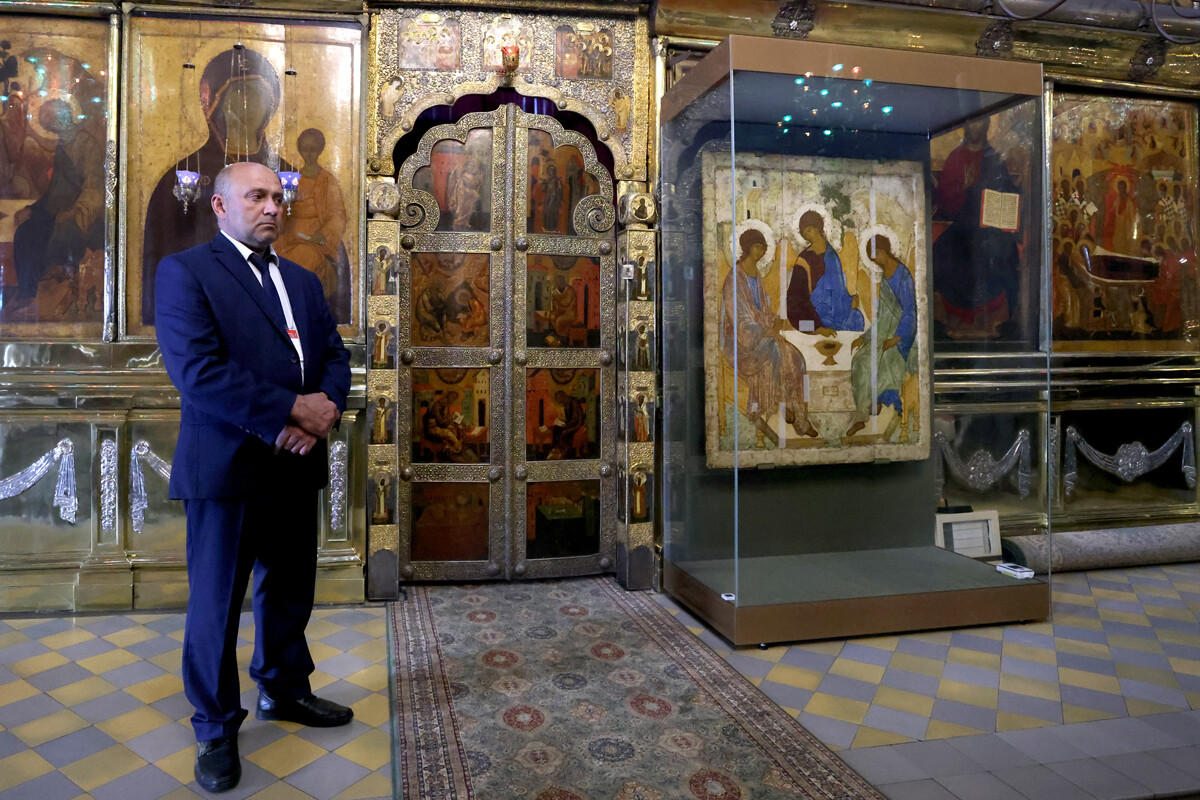
In 2022, the authentic ‘Trinity’ came to the Lavra for a while, carried in a special protective cabinet and was kept under guard
Artem Geodakyan/TASSDiscussions have been taking place in church and secular circles for many years now about whether the sacred object should permanently be returned to its rightful place. Representatives of the museum argue, however, that the icon needs particular conditions, a controlled environment and constant observation, something that can only be achieved in the gallery.
UPD on May 15, 2023. According to Vladimir Putin's orders, in a year's time, the icon will be moved to the St. Sergius Trinity Lavra. Until then, the icon will be situated at Christ the Savior Cathedral in Moscow.
Dear readers,
Our website and social media accounts are under threat of being restricted or banned, due to the current circumstances. So, to keep up with our latest content, simply do the following:
If using any of Russia Beyond's content, partly or in full, always provide an active hyperlink to the original material.
Subscribe
to our newsletter!
Get the week's best stories straight to your inbox